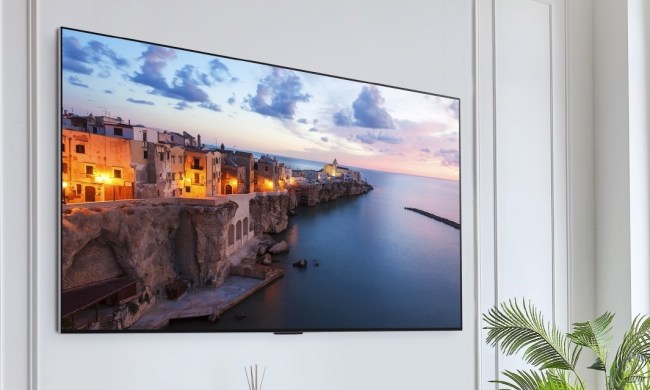Few rivalries in the tech space have been as cutthroat as the one between Korean electronics superpowers LG and Samsung. They compete across a variety of categories from kitchen appliances to smartphones, but when it comes to TVs, neither company has been shy about publicly calling out each other’s technology as inferior, or worse — misleading.
This was the crux of a claim leveled at Samsung by LG after Samsung decided to use the moniker “QLED” to describe its quantum dot TVs.
LG felt that TV buyers might think that QLED was a reference to a true, self-emissive quantum dot display, as opposed to the quantum dot-enhanced LED backlight system that Samsung was using — and continues to use — on its QLED TVs.
From LG’s perspective, this was a problem because it had rightfully been telling the world that its OLED TVs were the only self-emissive displays you could buy.
Each company decided to defend itself in a series of negative ads that denigrated the others’ TV products. It got so bad that the South Korean Fair-Trade Commission ultimately stepped in, at which point Samsung and LG agreed to stop the mudslinging.
Related Reading:
- New Samsung TV Lineup
- New LG TV Lineup
But it seems that LG has decided that if you can’t beat ’em, you gotta join ’em. The company’s recent announcement that its new line of Mini-LED TVs will be called “QNED Mini LED TV” is exactly the kind of misleading move it had previously accused Samsung of making with QLED TV, and it’s likely to spark an entirely new round of tit-for-tat negative ads.
What’s in a name?
The technology world is full of acronyms and it can be hard to stay on top of them all. There is a certain expectation, however, that once an acronym has been established, its meaning won’t change over time. This is how we can have meaningful comparisons between products. If, for example, Sony and Bose say that their headphones have “ANC,” we should be able to trust that both companies are referring to “active noise cancellation.” At this point, the only real question should be, which headphones have better ANC?
The same should be true in the TV world. Now that LG, Vizio, Sony, and Philips all make OLED TVs, there should be no debate about what OLED means, even if there may be considerable differences in the picture quality produced by these competing OLED models.
But LG’s adoption of the “QNED” label throws this much-needed consistency of meaning out the window. That’s because we already have a definition for QNED, and it’s not at all what LG means when it uses this term.
Will the real QNED please stand up?
Prior to LG’s announcement, QNED referred specifically to Quantum Nano Emitting Diodes. It’s a next-generation display technology that can theoretically deliver all the benefits of OLED and QLED in a single display, through the use of nanorod LEDs as a self-emissive light source.
If LG’s QNED Mini LED TVs actually used these nanorod LEDs, it would be a huge development in the TV world. But they don’t.
Even though LG hasn’t actually told us what the letters QNED stand for, we know there are no nanorods involved. Instead, LG’s QNED appears to take its “Q” from quantum dots and its “N” from the company’s NanoCell LCD display technology. It’s unclear what the “ED” stands for.
Preemptive plans
So why would LG intentionally adopt an existing acronym if it isn’t an accurate description of its TVs? Part of the reason is likely a desire to captivate the TV buying public with a new buzzword. After all, if LG is the only company making a QNED TV, that must be worth paying attention to, right?
But there’s another, more sinister reason. It turns out that Samsung has been quietly working on producing an actual QNED TV — one that uses nanorod LED technology. We probably won’t see these new models for another two years at least, but in labeling its Mini-LED TVs “QNED” LG has effectively pulled the product-naming carpet out from under Samsung.
It will be difficult, if not impossible, for Samsung to call these new TVs “QNED” (even if that’s exactly what they are) if LG is already using the QNED label for products that use a completely different kind of technology.
LG’s better than this
We’re not naive. The TV landscape is incredibly competitive and it’s unrealistic to think that companies like LG and Samsung won’t engage in a variety of strategies that are designed to make buyers believe that the competition is inferior. But we also believe that whatever short-term gains LG might get from being first with the QNED label, in the long run, it’s the rest of us who will suffer. It can be tricky enough to wrap your head around something as relatively simple as the difference between QLED and OLED, when everyone agrees on the terminology. But when companies start to appropriate acronyms and change their meaning in the process, it sows the kind of confusion and doubt that makes things far more difficult.



